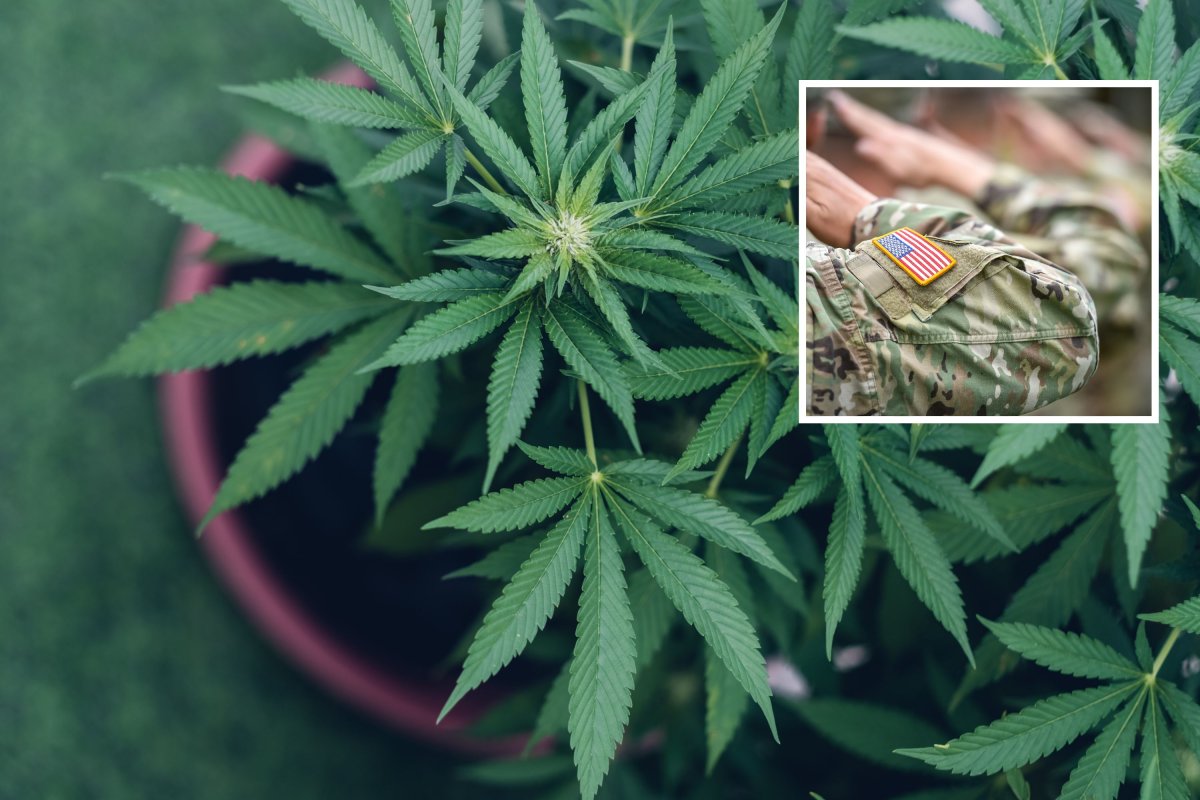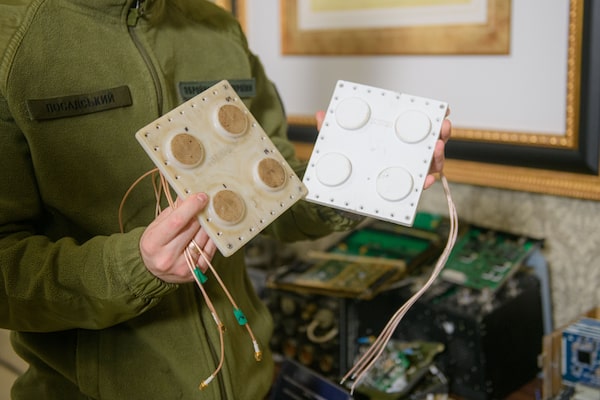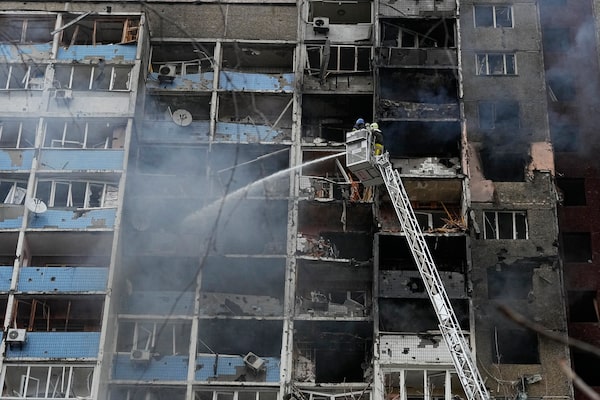Long-term environmental changes were not taken into account during disposal.
ByJulia Jacobo
February 29, 2024

Climate change could unearth nuclear waste buried by US, officials say
A report published by the U.S. Government Accountability Office found
The rise in global temperatures that are causing Arctic ice to melt and sea levels to rise could disturb Cold War-era nuclear waste buried by the U.S. decades ago, according to a federal report.
Noxious waste buried beneath former nuclear weapons testing sites could be unearthed by 2100 should the greenhouse gas emissions that cause climate change continue at the current rate, a report published by the U.S. Government Accountability Office last month found.
At multiple testing sites around the world, the U.S. military detonated atmospheric nuclear weapons -- or hydrogen bombs -- and later attempted to clean up the leftover radioactive waste by putting them in containers covered with a concrete cap, Robert Hayes, an associate professor of nuclear engineering at North Carolina State University, told ABC News.
MORE: Extreme wave in Marshall Islands highlights dangers of climate change, experts say
Rising temperatures could cause the spread of the radioactive contamination from these test sites in the coming decades, according to the Government Accountability Office report, which analyzes what is left of the nuclear debris in the Pacific Ocean, Greenland and Spain.
In Greenland, chemical pollutants and radioactive liquid left over from a nuclear power plant at Camp Century, a U.S. military research base, were frozen in ice sheets that could melt in the coming decades, according to the report. Denmark has instituted permanent ice sheet monitoring in the region.

A mushroom-shaped cloud and water column from the underwater Baker nuclear explosion
Pictures from History/Universal Images Group via Getty Images
The Greenland Ice Sheet is melting faster than previously thought, according to a study published in May 2023. Ice loss in the Arctic is the largest contributor to global sea level rise, scientists say.
In the Marshall Islands, the Runit Dome in the Enewetak Atoll was used as a radioactive waste disposal site that could be disturbed should sea levels continue to rise.
MORE: Greenland Ice Sheet melting faster than previously thought, scientists say
The U.S. conducted 67 nuclear weapons tests in the Marshall Islands between 1946 to 1958, according to the Department of Energy. Most of the testing was in preparation for World War III, William Roy, a professor of nuclear, plasma and radiological engineering at the University of Illinois at Urbana-Champaign, told ABC News.
There are currently disagreements between Marshall Islands officials and the U.S. Department of Energy on the risk posed by the nuclear waste.
While the Department of Energy considers human health risks on the Marshall Islands to be low, Indigenous communities are concerned that climate change could mobilize radiological contamination, posing risks to fresh water and food sources, and local officials believe the U.S. government is downplaying the risks, according to the report.
The authors of the report have recommend that the U.S. Department of Energy come up with a plan to regain the trust of Indigenous communities in the Marshall Islands.
MORE: Chernobyl nuclear disaster altered the genetics of the dogs left behind, scientists say
The U.S. military believed the cleanup missions they carried out was sufficient at the time but did not account for long-term environmental changes in these regions, Hayes said.
"The military was in the rush of the Cold War," Hayes said. "In hindsight, they could have done a better job."

The burnt out wreckage of the B-52 bomber, Jan. 17, 1966, a US B-52 SAC long-range bomber and a tanker plane collided over the Spanish Mediterranean coast near Almeria during a refueling maneuver. The bomber, which was on a patrol flight, had four hydrogen bombs on board.
Picture Alliance via Getty Image
The site of the 1966 midair collision between two U.S. defense aircraft -- of once which was carrying a hydrogen bomb -- over the Mediterranean Sea off the coast of Spain exceeded European Union standards for radioactive contamination, according to the report.
But the experts agree that the waste does not pose an immediate threat.
MORE: Radioactive capsule found in Australia could have been deadly with prolonged exposure, expert says
Should the nuclear waste leak out of the containers, it probably wouldn't cause much damage, as it would dilute drastically in ocean waters Hayes said.
In Greenland, the spent fuel -- the material containing the components with the longest half lives -- was removed when the reactor was decommissioned, Roy said. The Danish government has also reported that the short-lived radionuclides probably have long-since decayed, according to the report. The remaining nuclides trapped in the ice would probably be diluted by the massive of amount of water creative amid the melting, Roy said.

A Satellite image of Enewetak Atoll nuclear test craters, Marshall Islands, Dec. 6, 2020.
Gallo Images/Orbital Horizon/Copernicus Sentinel Data/Getty Images
MORE: Concerns mount over conflict in Chernobyl exclusion zone
In the Marshall Islands, though a more complicated situation with the presence of Plutonium detected, there is likely a "tremendous amount of dilution" there as well, Roy added.
The mere mention of radioactive material tends to spark fear, according to the experts.
"There is generally a public fear that is much higher than the actual risk," Hayes said.
MORE: Current model for storing nuclear waste may not be sufficiently safe, study says
Climate change presents problems much more immediate and threatening than Cold War-era nuclear waste, Roy said.
"Probably going to have greater issues from climate change than the mobilization of radionuclides from the Cold War," he said.




